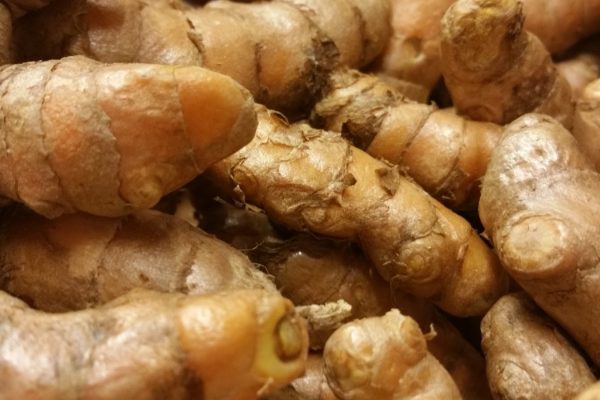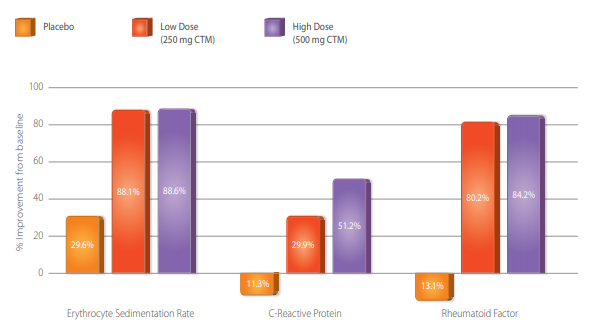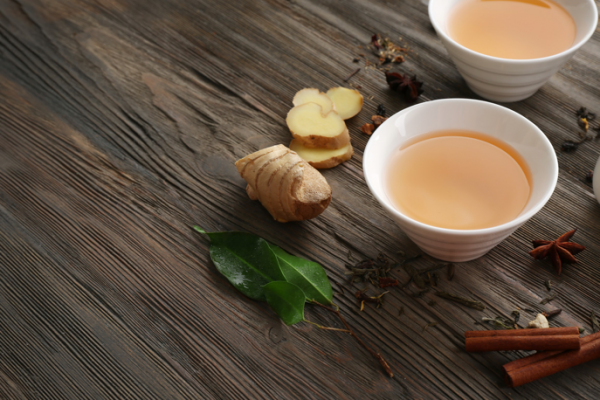Today, let’s talk all about turmeric.
Did you know there has been a lot of new data coming out about it?
The Big Picture: Turmeric
In short, here are some of the main points I want you to leave with today:
- Turmeric is a fantastic complement to your cooking — no drawbacks and no negatives, I’ll even share with you a recipe I love at the end of today’s article.
- Supplements of turmeric can be a different story. In some cases, supplemental turmeric can be harmful. In other cases, it may be useful for depression, fatty liver disease, lowering inflammation, and more.
So let’s get into when, and how, you would use turmeric for your overall health.
The History of Tumeric
As far back as 4000 BCE, there is literature about turmeric being used in Indian cuisine.
I have even seen some documented evidence of recovered pots, from around 2500 BCE, that were stained with turmeric.
In that region, turmeric has been used for quite some time. It made it’s way, more slowly, to places like East Africa, West Africa, Europe, and then North America.
Using Turmeric In The Kitchen
One of the major distinctions I want to cover with you today is two different kinds of turmeric that you are most likely to find, which include:
- Fresh Turmeric
- Dried Turmeric
As a generality, you need to consider it a 3:1 volume ratio. This means that, for every three teaspoons of freshly-grated turmeric, you would be using one teaspoon of dried.
Other than that, what’s the difference, though?
One of the things I enjoy doing is buying fresh turmeric. The drawback however, is that you have to buy a lot more than you need right away, and it doesn’t have much of a shelf life.
The solution I found, to keep it from going to waste, was freezing it. Another thing I like to do so the flavor is evenly distributed in a recipe is to use a microplaner for grating. Just know that it can make a big mess along the way – especially if you have light countertops. Because of it’s high concentration of pigment, it can also do a good job of staining your teeth!
Dried vs. Fresh. Which is better?
In doing the research for this article, I read a lot about blind taste tests with regards to dried vs. fresh turmeric. The main thing to note is that, when it’s cooked, even professional chefs can’t tell the difference.
I have noticed a bit of a difference when uncooked though, simply comparing a little dab of the fresh variety with that of the dried. You can taste the difference that way.
Overall, turmeric has a very subtle taste to it — especially in its raw form.
Key Insight: Given all the taste tests and data points, I can’t see an argument for only using fresh turmeric — it seems the dried variety is just as potent and beneficial!
Truth be told, the dried version of turmeric has a better shelf life, tends to be less messy, and it is typically more cost-effective than its fresh variant.
The Potential Dangers of Turmeric
There are really no drawbacks in using turmeric in your meals because you are using a relatively low concentration on your food.
That means no concerns, no real issues, and it doesn’t matter across age, pregnancy, or lactation — turmeric is safe to cook with when used in the diet in normal amounts.
What about Turmeric supplements?
Where you do want to exercise some caution is in supplemental forms of turmeric (which are otherwise known as curcumin extracts).
These higher concentrations of turmeric may not be safe for pregnancy and lactation. They also may delay coagulation (making your blood clot more slowly).
This is relevant for those who are either pre- or post-surgery, and those who may be using anticoagulant medications. Supplemental turmeric may not be a good idea.
Turmeric may also have a hypoglycemic effect. The pitfall is for those who are on blood-sugar-lowering medications, as there may be an additive effect with turmeric that causes the medications to have too much effect.
There are also a handful of other medications that supplemental turmeric could negatively interact with, which include:
- Sulfasalazine
- Tacrolimus
- Talinolol
- Docetaxel
- Chlorzoxazone
- Clozapine
- Cyclobenzaprine
- Haloperidol
- Olanzapine
- Zileuton
- Zolmitriptan
This is because of the effect that supplemental turmeric has on phase-one liver enzymes. If you are on some medications for some ongoing reason, be sure to check with your doctor or pharmacist to see if this could be an issue.
Bottom Line: You shouldn’t worry about dietary turmeric at all, but it is productive to be a bit more cautious when it comes to supplemental turmeric and how a higher concentration of it (and curcumin extract) could negatively influence your health.
How Does Turmeric Help?

Now that we have covered some of the potential dangers of compilations, let’s dive into how turmeric can help your health!
The important thing to note is that you can find studies on turmeric relating to so many different conditions. The research on it is vast and gives us a great source to work from.
That doesn’t mean that it is always effective, though, so let’s focus our efforts on where turmeric has helped people in meaningful ways (not speculative).
Here are the various conditions where we have fairly solid evidence on the benefits of turmeric…
Allergic Rhinitis
This is the classic runny nose due to allergies. The use of turmeric, both dietary and supplemental, could be a positive factor in treating those issues.1
We believe that the mechanisms which make this possible are through the reduction of inflammation, as well as stabilization of mast cells.
Some perspective here is important, and that’s because things of this nature typically take somewhere around several weeks to start having a clear effect.
Therefore, this isn’t a spray type of solution, but it is one that can be quite helpful if you take the time to incorporate it.
Depression
This is something I wasn’t sure about at first, but the body of evidence warrants mentioning it in our discussion today (Click Here: A Full Guide To Understanding Depression).
Some studies looked at turmeric all on its own, and others focused on using turmeric in conjunction with antidepressant medications.2
The amount, otherwise known as the “depressive index score,” was fairly dramatic. In fact, it was more than we would generally see from medications alone.
It was also observed that many who had ongoing anxiety symptoms also saw some fairly marked benefits from turmeric during these studies.
High Triglycerides
There are also some possible benefits with turmeric for decreasing total cholesterol.
While the research isn’t quite as solid, there have been some fairly decent effects for reducing overall triglycerides.3
Fatty Liver
Related to the previous point, turmeric also has a lot of good data behind it suggesting that the amount of fat in the liver could be reduced by about 43% with turmeric’s help.4
The same study also showed that turmeric helped with the main liver enzymes (ALT and AST), long-term blood sugar (A1C) improved, and total cholesterol also improved (Read More: How Do You Know If You Have Fatty Liver?).
Arthritis
One of the main reasons you may have heard about turmeric to this point is how it can act as an anti-inflammatory. This is most felt in the case of arthritis.
The most specific data we have focuses on knee osteoarthritis. This is chronic knee pain due to degenerative, as opposed to inflammatory, arthritis.
Barring some medications and population risks, this is also completely safe.5
Pruritus
Let’s file this one under “incomplete” when it comes to turmeric.
There have been studies showing turmeric benefiting those who suffer from chronic itchiness, however, it was fairly specific to patients with chronic kidney disease of mustard gas exposure.6
The Best Forms of Turmeric Supplementation
So, if it helps us to be mindful of turmeric supplementation, how do we ensure that we are getting the best amounts for our health?
There are a lot of forms out there, so let’s break each of them down:
- Crude Powder – No different than what you might find in the grocery store
- Turmeric Extracts – The extracted form of turmeric
- Tincture of Turmeric – Roots soaked in an alcohol extract
- Modified Extracts – Extracts intended to help us absorb the turmeric better
Building on that last form, modified extracts, this has been a big area of focus in trying to get better absorption rates from turmeric. There are two kinds of factors at play here:
- Nanoparticles
- Phytosome
These are various ways that turmeric has been allegedly “changed” to allow us to absorb it better. This is something I often call the “absorption wars.”
This is where companies will compete upon what percentage of curcumin is absorbed from their product. So, let’s break that down a bit.
Do You Even Need To Absorb Turmeric?
It might be safe to assume that you need your turmeric to be as absorbable as possible in order for it to work, but is that the case?
When scientists saw good health benefits in populations that consumed turmeric, then they started doing tests in laboratories. What they found was that one of the main alkaloids in turmeric (curcumin), that in a test tube it is able to inhibit inflammatory enzymes.
That said, they then looked at curcumin and found that when someone consumes turmeric you can see how much curcumin enters their bloodstream. What they found is that pretty much none of it entered the bloodstream.
Key Insight: When we consume turmeric, curcumin is not absorbed. That is the conundrum, because of the positive benefits of this active ingredient.
So, a lot of thinking has gone into how we can get more of this curcumin. People have looked into how we consume turmeric, what we consume it with, and if there does exist the opportunity to get more of it than was previously thought possible.
Bioavailability has become one of the major concerns of turmeric, so much so that companies have taken that principle (that curcumin is what matters), and they keep tweaking and adjusting to try and get curcumin better absorbed in the bloodstream.
Isolating Curcumin: What Happens?
Researchers have found that when you isolate curcumin and add piperine, it could cause more curcumin to be added to the bloodstream when ingested.7
So, manufacturers took that data and absolutely ran with it. They created some curcumin concentrates and added absorptive aids (like piperine).
Now, though, there have been multiple reports where curcumin with piperine has led to autoimmune hepatitis. This is a nasty condition, and can even result in death.
Key Insight: In fact, about half of those who get autoimmune hepatitis do not survive. That is why highly-absorbed curcumin extracts may pose a risk to your health.
There were even doctors who were offering IV of curcumin (to try and get as direct as possible in the bloodstream). Unfortunately, this application resulted in a tragic death.
It turned out that the compounded intravenous curcumin didn’t really have any curcumin in it at all. They found that there was a fair amount of polyethylene glycol that ended up in the medication (and less than 1% of the labeled amount of curcumin).
Bottom Line: I am always wary of compounded medications, because of the lack of checks and balances, and this is a good example of that when it comes to curcumin and other injectables.
When Is Curcumin Safe?
There have been studies showing that low amounts of curcumin are absorbed if they are given in whopping amounts, that some low threshold may be safe.
The problem is that we really do not have enough data here to make a concrete decision one way or the other. There is little safety data about nanoparticles and phytosomes.
While oral administration of curcumin at the dose of 6 g/day for 4–7 weeks was safe in humans, it should be mentioned that curcumin may be absorbed in low amounts in the gastrointestinal system.
However, bioavailable formulations in animals and humans did not have major toxicity but more studies are needed to substantiate this issue.8
A New Model of Turmeric
For many researchers, a new model around turmeric is being discovered.
It is based on the idea that perhaps simply getting curcumin in your bloodstream is enough, and that there are benefits of turmeric related to its gastrointestinal effects (not systemic ones).
Rather than circulating throughout the body and stopping inflammation, turmeric can act on the local facets of the gut chemistry that regulate systemic inflammation.
This is a new, emerging model. We are seeing that turmeric, and its effect on the gastrointestinal system can produce some pretty amazing results. This includes:
- Changing our more powerful internal antioxidant pathways (like Nrf2)9
- It can have a great deal of influence on NFkB, COX enzyme, and matrix10 metalloproteinases (all things controlling our body)
- Boosting NK cell activity and benefitting toll-like receptor 4 and balancing innate immune response to lipopolysaccharides11
- Attenuating LPS-induced cytokine release and tight junction protein disruption12
Key Insight: While this may sound like a lot of science, it boils down to the fact that turmeric can have a whole host of influence on our health, right from our gut.
For me, jumping into the “absorption wars” kind of misses the point, because I wasn’t certain upon the first principles being valid.
More emerging data is only seeking to validate my earlier concerns, that simply absorbing more curcumin isn’t necessarily the answer. In fact, it may be an issue.
The Whole Plant Matrix
There are newer compounds now, called the complete turmeric matrix (CTM).
These are neat because they aren’t simply looking for more ways to get more curcumin into your bloodstream.
Instead, they are looking for ways to better mimic the entire effects of the turmeric plant in your intestinal tract.
This is a really cool spectrum of benefits that the plan can have, and it seems that most of these emerging benefits relate back to the reduction of inflammation.
Included here is how your gut is able to influence and mitigate inflammation throughout your body. The full spectrum of compounds, not just curcumin, are worth mentioning, including:
- Curcuminoids
- Sesquiterpenoids
- Turmeric protein
- Volatile oils
- Tumerone
- Atlantone
- Zingiberone
- Curdione
- Germacrone
Taking all of these together, you can see a greater benefit from turmeric rather than if you were to focus on curcumin alone. It is about recognizing the entire plant, all at once.
Now, the idea is less about bioavailability in turmeric, but the bioefficacy that we can find from it. This complete matric can dramatically lower inflammation in only a few weeks.13,14

How Do You Use Turmeric?
If you were to think about supplementing with turmeric, I would encourage a complete turmeric matrix — and would encourage avoiding plain turmeric in capsule form.
I also wouldn’t encourage curcumin extracts. In terms of using that, the complete turmeric matrix was also interesting because the doses were not massive by any stretch.
Instead, you would be taking one capsule, once a day (taken with food). Now, you wouldn’t take that at the same time as your thyroid medication.
The best-documented indication for once-daily use would be for things like:
- Chronic depression
- Anxiety
- High triglycerides
- Fatty liver syndrome
Key Insight: In more acute inflammatory states, it may even be worth considering one capsule, twice daily with food. This would include generalized inflammation and pain, especially in cases of osteoarthritis, itching, or rhinitis.
Action Steps: Turmeric
Now that you know more about turmeric, how can you work toward incorporating more into your daily life? It’s easy, and I’d love to show you how.
First, start using turmeric more in your daily cooking. I’m a big fan of the dried root, but as I mentioned it has a short shelf life, is a bit messy, and the taste isn’t any better or worse.
In general, turmeric pairs quite well with:
- Black pepper
- Ginger
- Cinnamon
- Garlic
There are also a lot of things on the sweeter side that would work well when paired with turmeric. This would include baked vegetables, especially orange ones like sweet potatoes, squash, or carrots.
It is also great in split pea or chicken soups, curries, cooked greens, and others. I’ll share some of my favorite recipes below, but this is just an easy way to get started.
Dr. C’s Favorite Turmeric Recipes

Here are some of my absolute favorite recipes for including turmeric…
Dr. C’s Golden milk
This is a great coffee or tea substitute for first thing in the morning. It’s also helpful to know that just about any non-dairy milk can work!
Serves: 3
Ingredients
- 12 ounces of unsweetened flax milk
- 1 quart of ice cubes
- 1 tsp dried ground turmeric
- 1/2 tsp fresh ground ginger
- 1/2 tsp fresh ground Ceylon cinnamon
- 1/2 tsp pure vanilla extract
- 1 tbsp honey
Directions
- Place all ingredients in a small saucepan and bring to a boil
- Whisk thoroughly until well blended
- Cook on medium-low heat for 10 minutes
- Strain mixture using a fine strainer
- Serve or refrigerate
Turmeric Iced Tea
This is my favorite way to get a regular dose of turmeric. This Turmeric Iced Tea is also a great way to keep cool on warms days, and is incredibly refreshing!
Serves: 4
Ingredients
- 1 quart of water
- 1 quart of ice cubes
- 2 tsp dried ground turmeric or 2 tbsp fresh ground turmeric
- 2 tsp fresh ground ginger
- 2 tbsp maple syrup or stevia to taste
Directions
- Place water in a small saucepan and bring to a boil
- Add turmeric, ginger, and cinnamon
- Reduce heat to low and simmer for 7 minutes
- Strain mixture using a fine strainer
- Stir in maple syrup or stevia
- Combine tea and ice in a 2-quart pitcher
- Serve or refrigerate
Golden Oats
To ensure that these oats come out well, it is best to cook them in advance. I even make 1-2 batches like this most weeks, so there is always some on hand for a quick breakfast.
Serves: 4
Ingredients
- 3 cups of water
- 1 cup steel-cut oats
- 2 tsp dried ground turmeric or 2 tbsp fresh ground turmeric
- 2 tsp ground cinnamon
- 1/2 tsp ground cloves
- 1 medium apple, cored and diced
Directions
- Place water in a small saucepan and bring to a boil
- Add all ingredients and stir
- Reduce heat to a low simmer
- Cover and simmer for 30 minutes
- Let rest covered for 10+ minutes before serving
- Serve with a source of protein, optional sunflower seeds, and stevia to taste
Start Enjoying Some Turmeric Today!
Now that you know a bit more about turmeric, I want you to know how good it can be for you — whether in your diet or when supplemented correctly — and how turmeric is just a great addition to just about any mealtime.
Everything considered, whether for depression, chronic pain, or liver function, turmeric can be a fantastic addition to both your diet and your life. I hope you’ll give it a try today.
While you’re here, though, I’d also love to share the Thyroid Quiz with you (Click Here: Take The Quiz Today). If you’re at all concerned about your health, it may give you the information (and action steps) you need to make the best choice to live your best life.
Resources
2 – https://pubmed.ncbi.nlm.nih.gov/28236605/?from_term=curcumin+depression&from_pos=1
3 – https://pubmed.ncbi.nlm.nih.gov/23143785/?from_term=curcumin+triglycerides&from_pos=1
4 – https://pubmed.ncbi.nlm.nih.gov/27270872/?from_term=curcumin+fatty+liver&from_pos=1
5 – https://pubmed.ncbi.nlm.nih.gov/27533649/?from_term=curcumin+arthritis&from_pos=1
6 – https://pubmed.ncbi.nlm.nih.gov/27213821/?from_term=curcumin+pruritis&from_pos=1
7 – https://www.ncbi.nlm.nih.gov/pmc/articles/PMC7162126/
8 – https://sci-hub.tw/10.1002/ptr.6054
9 – https://www.ncbi.nlm.nih.gov/pmc/articles/PMC6273481/
10 – https://www.ncbi.nlm.nih.gov/pubmed/15615723
11 – https://www.ncbi.nlm.nih.gov/pubmed/15489888
12 – https://www.mdpi.com/1422-0067/20/8/1912
13 – http://www.journalcra.com/sites/default/files/issue-pdf/6215.pdf
14 – https://sci-hub.tw/10.1089/jmf.2017.3930

1. Schedule a Thyroid Second Opinion with me, Dr. C, Click Here for Details
2. Download and use my Favorite Recipes Cookbook Here
3. Check out my podcast Medical Myths, Legends, and Fairytales Here
Dr. Alan Glen Christianson (Dr. C) is a Naturopathic Endocrinologist and the author of The NY Times bestselling Adrenal Reset Diet, The Metabolism Reset Diet and The Thyroid Reset Diet.
Dr. C’s gift for figuring out what really works has helped hundreds of thousands of people reverse thyroid disease, lose weight, diabetes, and regain energy. Learn more about the surprising story that started his quest.

